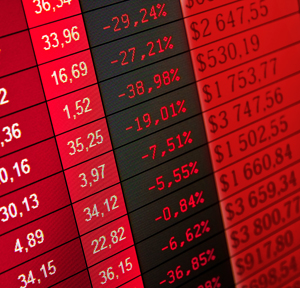Investment Strategies
Use Market Sell-Off As Chance To Get Back In The Game For Long-Term Gains - UBS

The Swiss wealth management house remains neutral on equities and argues that the sell-off in global equities offers an entry point to build for long-term gains.
Investors should use the opportunity created by the heavy selling
in global equity markets to get back on board for the
long term, argues UBS Wealth Management.
With global markets getting off to a miserable start to 2016,
having ended last year on a dull note, the air is full of alarm.
So far this year, the MSCI World Index of developed countries’
shares, for example, has fallen 10.5 per cent (in dollars). A key
“fear” indicator in the form of gold prices, is flashing red,
with the yellow metal pushing above $1,200 per ounce for the
first time since June last year. It is argued that financial
markets have lost faith in the ability of central bankers to
revive the global economy.
“Risks related to the US economic growth, China, oil markets,
and, most recently the European banking sector have driven a
sharp sell-off in risk assets year-to-date. We believe these
concerns are legitimate, but that markets have broadly priced in
these risks. We see potential for intervention from central banks
or governments,” Mark Haefele, global chief investment officer,
UBS Wealth Management, said in a note. “Given also that our base
case is for no US growth recession, we believe investors should
take the opportunity presented by the market sell-off to
rebalance portfolios back toward long-term strategic asset
allocations,” he continued.
Haefele said that despite recent heavy selling to markets, UBS
remains neutral on equities. In the short run, it said the
likelihood of more market-friendly central bank statements or
action boosting risk asset prices is balanced by the fact there
has been little improvement in economic indicators, as well as
fresh concerns about credit conditions in Europe.
“As we noted in early January, when we reduced equities and added
to high-grade bond positions, markets are fragile and vulnerable
to further shocks. We listed declining oil prices, uncertainties
over Chinese policy decisions, and weaker US manufacturing data
as factors to monitor. The recent sell-off is being driven by
many of the same factors. But additional concerns have also
emerged, regarding the European banking system and credit
markets,” he continued.
“While we would like to see an improvement in the global growth
picture before turning more constructive on equities, we estimate
markets are already pricing in a roughly 30 per cent chance
of a US recession, and continued central bank policy intervention
remains an upside risk for markets,” Haefele said.
Oil and China
Haefele said that oil prices have been a “critical driver of
equity markets in 2016”; he noted that the three-week correlation
of crude prices to global stocks hit 95 per cent in January. “We
believe that the market is right to be concerned about oil prices
remaining at low levels: we expect the default rate among US high
yield energy firms to rise to 15 per cent over the coming year,
and energy sector capex cutbacks have already negatively impacted
US jobs and economic growth in selected states,” he
said.
“However, we believe the market is failing to appreciate some of
the positive factors. We continue to expect the benefit that low
oil prices have on consumers' spending power to materialise in
the months ahead. Furthermore, cutbacks in output should also
help push Brent crude prices back to around $55/bbl in 12 months,
alleviating the pain for oil producers. For US stock markets,
energy's share of S&P 500 market capitalisation is around 6.5
per cent, whereas beneficiary sectors such as industrials,
consumer staples, and consumer discretionary have a combined
weight that is around five times larger,” he said.
In the case of China, Haefele said recent figures show continued
capital flight from China; data showed that the country’s forex
reserves fell by almost $100 billion in January, to $3.23
trillion.
“As long as this outflow persists, markets will continue to
discount the risk of a sharp yuan devaluation and subsequent
depreciation from Asian trading partners. We believe the risk of
this occurring stands at around 30-40 per cent,” he
said. “But in our base case, we continue to believe that
selective monetary and fiscal easing in China should prove
sufficient to stabilise both economic growth and capital
outflows, while limiting concerns about a disorderly exodus of
international funds from the region.”
